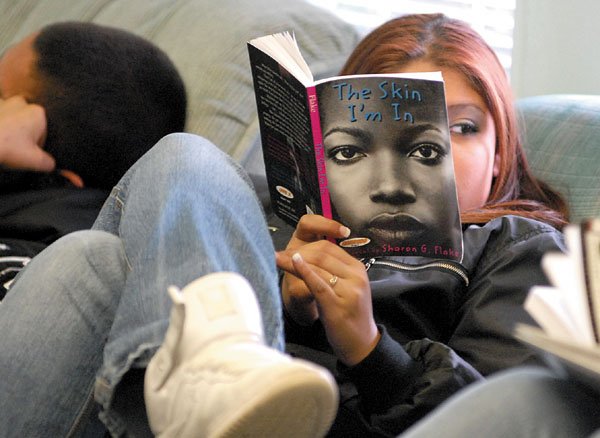Gilroy
– For more than 1,100 students struggling with English in middle
school and high school, a seed of hope has germinated.
Gilroy – For more than 1,100 students struggling with English in middle school and high school, a seed of hope has germinated.
Gilroy High School and South Valley and Brownell middle schools have implemented a pilot program of “Read 180,” a course aimed at bringing students’ reading and writing abilities up to state expectations for their grade level. After just 30 days of running the program, 27 percent of students were substantially closer to that goal, said South Valley English teacher Michelle Cameron at an April 5 board meeting.
“The results we see now are really encouraging to say the least,” said Paul Winslow, a high school English teacher who runs a Read 180 class.
The 90-minute elective class has students rotating between discussing topics in a seven-student group with a teacher, reading a book and using computer software.
This organization of class time allows students to get individualized attention from the teacher in the small-group setting, time to turn the lessons into a pleasurable experience during an independent reading session and immediate feedback and level-specific challenges from the computer software, said Cameron.
The success of the program comes not only from its organization, but also from its subject matter, said Winslow. The students enjoy the reading material, which includes descriptions of the bubonic plague and tales of survival from refugees of Zaire. The engaging topics not only encourage reading, they also prepare students for other classes, he said.
“It’s like putting the pill inside the peanut butter,” he said. “We’re giving them reading skills and it’s high-interest reading, and it’s also cross-culture.”
The result is better reading and writing skills in English as well as other subjects, said ninth-grader Antonio Garcia, a member of Winslow’s last period class.
Before, “every time I read, I couldn’t understand anything,” he said. However, he noticed just recently, “I actually improved. I was writing better paragraphs, I was reading more efficiently, I was just understanding more of what I read.”
Garcia was the only student out of 177 students tested in February to move up two reading levels toward the goal of level four – signifying the student is near or at grade level. An additional 47 students – or 27 percent – moved up one reading level. Only 14 – or 8 percent – of students moved down a level. The remainder stayed the same.
“Of course, we want to see an entire year,” said Winslow of the early results.
The program will show even more convincing results after a full year and if implemented five days a week instead of the current three – a necessity with the current high school bell schedule – said Gail Donovan, director of assessment and intervention for the Gilroy Unified School District. She was part of implementing the program at Hanford Joint Union High School District, where she was an assistant superintendent, in California’s Central Valley.
“When implemented properly, secondary school students show significant gains,” she said.
Based on the program’s reputation and the early positive results, schools are increasing the number of classes available. Next year the high school will be doubling the number of classes – limited to 21 students apiece – to six, for a total of 126 students. South Valley and Brownell will also be upping their number of classes.
Yet these classes will only begin to address the need, said Donovan. The increased work at the middle schools will also serve to reduce demand for these remedial classes at the high-school level, said GHS Principal James Maxwell. This will have a cumulative effect and decrease the population that needs help, he said. This has added to his passion about the program.
“What’s my No. 1 priority besides keeping teachers? It’s this,” he said.
For South Valley, the program could also make a difference in helping the school shed Program Improvement – a federal designation for underperforming schools. The school almost evaded the designation last year, but too few of the school’s English language learners qualified as proficient on a standardized test. This year, the results might be different as the district is using Read 180 to target students – including English learners – that score low on standardized and internal tests.
The program is not just about test scores and meeting minimum qualifications, but also about fostering a lasting enjoyment of reading, Winslow said.
“It is to prepare students for the world,” he said. “They bring those funds of knowledge into a science class and that produces enthusiasm. It gives students a lot of power.”















